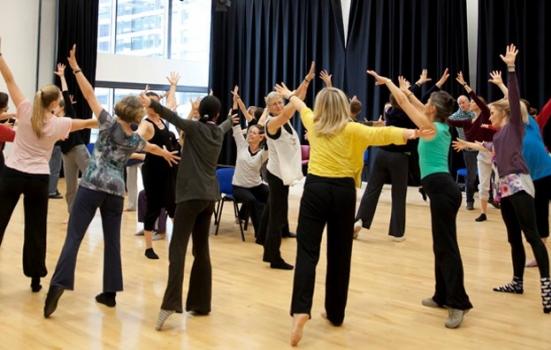A strategic collaboration between One Dance UK and People Dancing will focus first on encouraging primary schools to spend more on high quality dance.

Rachel Cherry, People Dancing
A new strategic partnership to tackle inactivity and improve health and wellbeing through dance has been launched by One Dance UK and People Dancing.
The collaborators intend to lobby Government to show dance is an effective way of getting people more active, improving mental health and reducing social isolation. An initial focus will be on encouraging primary schools to spend more on high quality dance.
Andrew Hurst, Chief Executive of One Dance UK, said: “This important initiative builds upon One Dance UK’s advocacy programme, and we look forward to making a stronger case for dance, and to strengthening partnerships with public health, social care and education.”
Strategic Framework
The new framework is to build on People Dancing’s community and inclusion expertise, and One Dance UK’s work with young people and in education.
It will set the strategic direction for the two partners for the next three to five years and “help create new opportunities for dance participation across England”.
Chris Stenton, Executive Director of People Dancing, said: “Engaging in the health and wellbeing agenda is not about changing what dance artists and teachers do – it’s about having confidence to know when and how to reframe the multitude of health and wellbeing benefits of dance and dancing.”
National scale
The potential for dance to achieve healthcare objectives has received increasing attention, with a recent study by People Dancing finding dance has physical, social, cognitive and emotionally positive benefits for older people. Similarly, a pilot programme by Aesop found dancers can deliver effective healthcare programmes, though concluded it is still too soon for the health system to commission such a programme nationally.
But Stenton told AP ambitions to increase dance opportunities across the country are feasible because the commissioning landscape for physical activity, to tackle inactivity, is different.
“Our strategy is about public health and as such we intend to work with the public health, social care, education and sports sectors,” he said.
“Part of the ‘scaling-up’ process, for us, it to propagate successful models of practice to increase opportunities for people to participate whilst ensuring that dance artists and leaders have the skills and knowledge they need to enable this.”
He pointed to Sport England’s £245m Active Nation Strategy, which specifically mentions dance, and the rising PE & Sports Premium for schools, as new opportunities for funding.
The two bodies will be developing the framework over the coming months and consulting with leaders in the health and dance sectors.




